Cruising European rivers on a luxurious river boat is becoming one of the most popular ways to explore Europe. The ‘unpack once’ and ‘all meals included’ features save time, money, and energy; shore excursions are included in the fare. Exploring a port city or village on your own appeals to the more adventurous while a guided tour with an English-speaking local assures you will not miss a destinations highlights. Now, riverboats are cruising the lower Danube through the Balkans taking in Hungary, Bulgaria, Croatia, Serbia and Romania.
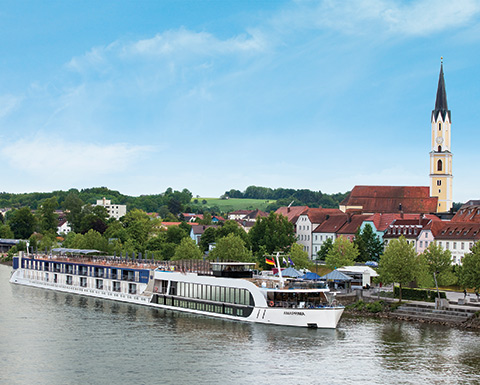
I recently enjoyed AmaWaterways‘ Black Sea Voyage that stayed on the Danube River. Black Sea indicates a region of Europe also known as Eastern Europe or the Balkans. This voyage is ahead of the industry curve in a region that was devastated by war and communism twenty years ago and, although lightly traveled, has an emerging tourist industry.
Aboard the AmaPrima, we called our stateroom a stately room with a French balcony as well as an outside balcony. Waking up to a sunny view of the river and enjoying a star-studded drink on our private balcony were enchanting ways to begin and end our days. The stateroom was compact but comfortable and furnished with a desk, two chairs and a coffee table. Wifi is free throughout the boat, but reception varies depending on geographic location. This region is less developed than Western Europe.
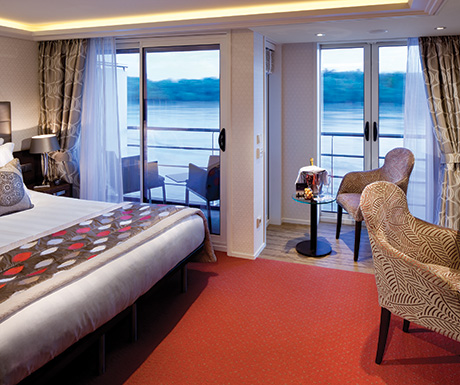
The best view of the trip was from the sundeck in what may be the worlds smallest swim up bar. This heated mini-pool has four barstools.
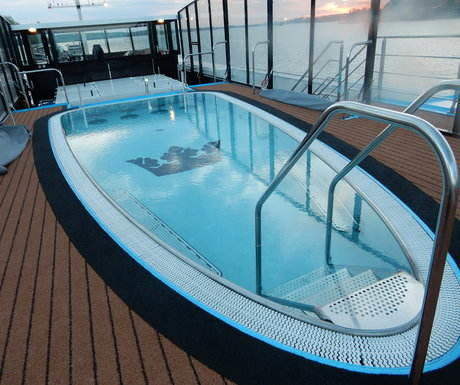
With flutes of champagne we toasted casting off and were stunned by Budapest ignited in shades of white and gold. We sailed under illuminated bridges and by gloriously lit historical buildings. We could hear the program directors narration on the deck where most passengers were seated in lounge chairs and covered with shawls. His narration was broadcasted in the lounge for passengers who wanted a cozier view.
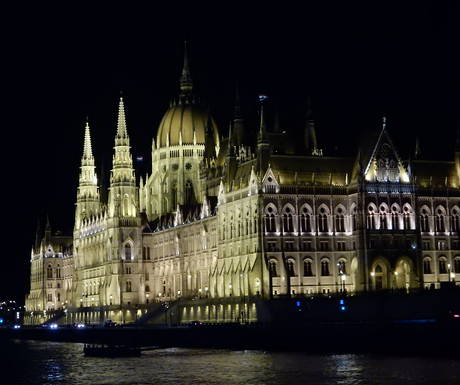
Dining is especially pleasant with open seating and buffet options for breakfast and for lunch salads and desserts. On two evenings, dinner began with an amuse bouche. In addition, a small sorbet was served before the main course. Menu choices included regional cuisine such as Hungarian goulash, lentil soup with sausage, sauerkraut soup, chilled yogurt blueberry soup, and langos fried bread. This Hungarian street food topped with sour cream and cheese paired well with an elegant dinner.
Although the dining room is walled with windows on both sides, the best dinner-time vistas are at the Chefs Table restaurant at the front of the ship: here, three sides are all glass. Seating only 24 and with an open kitchen where the chef prepares your meal and explains what he is doing, it is an unusual and enjoyable experience. The four-course set menu gives two choices for an entre. Guests are encouraged to dine there once and are not charged. The menu is repeated most nights.
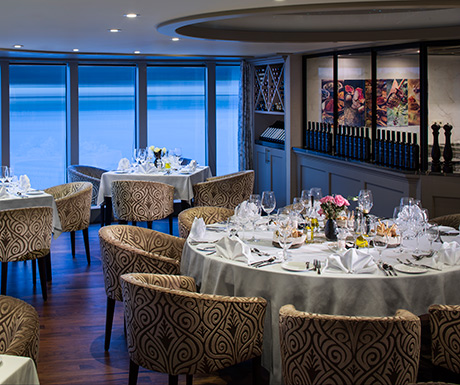
A selection of excursions was offered on most days. The first morning we visited Pecs, which is the former European capital of culture with a spacious, flower-filled town square and a church with Roman foundations. After lunch on board, we enjoyed wine tasting in Villany, one of Hungarys most prestigious wine regions. Some passengers used the ships bikes or walked to explore Mohacs, the town where we docked. A Turkish victory 500 years ago still shapes the culture. Symbols and statues of men wearing alarming Buso (masks) represent the villagers attempts to scare off the Turkish invaders.
Other stops along the Danube included Vukovar, Croatia; Novi Sad and Belgrade, Serbia; Vidin and Rousse, Bulgaria; and Giurgiu, Romania. From Giurgiu, it was an hour and a half bus ride to Bucharest, but worth the time on the bus to see a city recovering from Ceausescu who was execukted in 1989 after a brutal totalitarian rule. I saw many travel agency signs in a country whose citizens were not allowed to cross the borders a generation ago. The Village Museum, open since 1936, has more than 60 original houses, farmsteads, and churches dating back to the 1700s from historic regions of Romania.
Our excursion to Vukovar, Croatia, was especially meaningful to me. I was there in 1997 as a journalist covering the aftermath of war with Serbia. Even after a few years of an uneasy peace, hidden shells were still exploding; ruined homes were mined. A one-legged man with hand-hewn crutches made awkward detours around holes from ordinance that beat his once graceful town to rubble. Survivors bought food and clothing at wooden stalls or begged with trembling hands and need mapped on their faces. No church bells tolled. Steeples had fallen along with homes and hospitals, along with soldiers and innocents, along with trade and tradition.
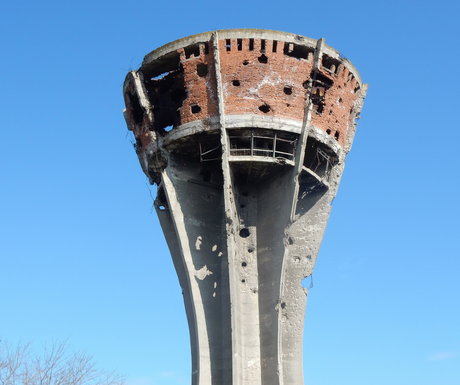
Now, the town that had been 95 percent demolished has been 75 percent rebuilt. Refugees have returned, commerce has taken root. Recreational boats are in the harbor. Sidewalk cafes are lively, and an outdoor market has an abundance of produce and customers. Bodies have been reclaimed from mass graves and reburied in a hauntingly beautiful cemetery. The water tower that withstood 1600 bombs and grenades stands as a testament to a spirit that Serbia could not break.
Luxury has many facets, some obvious like cruising the Danube on an AmaWaterways luxury boat. My personal luxury was revisiting Vukovar where that part of my heart that had broken many years ago began to heal.